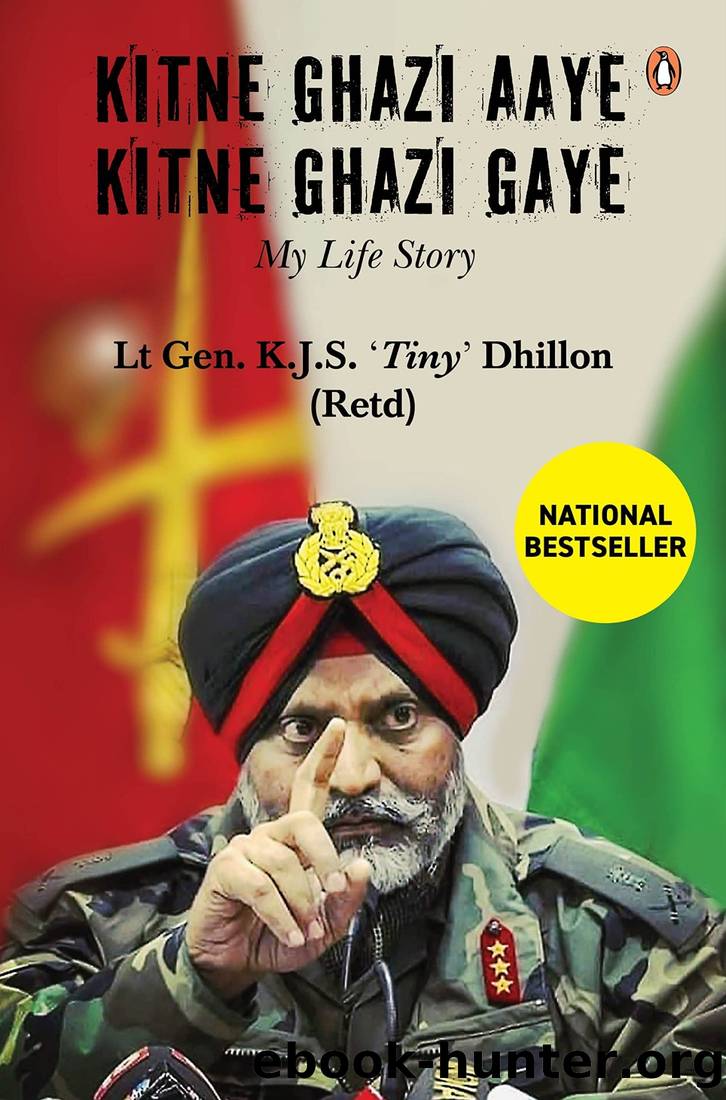Kitne Ghazi Aaye, Kitne Ghazi Gaye by K. J. S. Dhillon

Author:K. J. S. Dhillon [Dhillon, K. J. S.]
Language: eng
Format: epub
Tags: Biography, Autobiography, Personal, Memoirs, True, Crime, Espionage, Self-Help, Self-Management, Military, History, Political, Science, Geopolitics, Social, Violence, Society, Language, Arts, Disciplines, Linguistics, Sociolinguistics, Historical, Veterans, India, Army
ISBN: 9789354928956
Google: 1wmtEAAAQBAJ
Amazon: B0BQWNDZWV
Publisher: Penguin Veer
Published: 2023-02-13T18:30:00+00:00
Beginning of TerrorismâWhen Did It Happen?
Another issue which is often flagged is that of the 1987 Assembly elections in Jammu and Kashmir, which is considered a trigger for the advent of insurgency and terrorism because it is alleged to have been a rigged election, post which the National Conference came to power and Farooq Abdullah became the chief minister. However, yet another indicator that has often been ignored is the conduct and outcome of the 1989 Parliamentary elections, for which the separatists or the subsequent terrorists had issued a boycott call. The following data pertaining to the 1989 elections provides some key insights on the prevalent security situationâ of three Parliamentary constituencies in Kashmir, only 5.48 and 5.07 per cent of the total votes were polled in Baramulla and Anantnag, respectively, whereas the Srinagar seat was won uncontested by the National Conference. The outcome of a conspicuously low voter turnout in the face of a boycott call is an indication of an environment of fear, threat and intimidation, and the presence of undesirable elements in the Kashmir Valley in 1989, a fact that is often glossed over and the entire narrative is shifted to the issue of who was or was not the chief minister on 19 January 1990.
As regards the other seats in the state, the polling percentages in Udhampur and Jammu were approximately 40 per cent and 5 7 per cent, respectively, while in Ladakh, about 86 per cent of the total votes were polled. In these constituencies, multiple parties were in the fray, and the elections were keenly contestedâthis also highlights the stark contrast between the Jammu and Ladakh regions vis-a-vis the Kashmir Valley, with the former characterized by remarkably close contests among various political parties and people exercising their franchise fearlessly as compared to the fear prevailing among voters in Kashmir.
Thus, the 1989 elections in Jammu and Kashmir, which are hardly discussed, represent a strong portent of things to come and the impending terrorism. There were clear signs that things had started deteriorating even before and at the time of the 1989 Parliament elections, there was a perceptible fear psychosis. The call for an election boycott was also more or less adhered to in totality. Further, selective killings had also started in 1989, and intriguingly, the then chief minister resigned on 18 January 1990, followed by the declaration of Governorâs Rule in the state. It is not a coincidence that the infamous date of the exodus of the Kashmiri Pandits fell just a day later, that is, on 19 January 1990. The atmosphere in the region was highly toxic, as open announcements were being made asking Kashmiri Pandits to leave, and a few prominent Kashmiri Pandit personalities like Justice Neelkanth Ganjoo and Lassa Kaul were also assassinated. Justice Ganjoo was targeted and killed by terrorists on 4 November 1989 because, as a sessions court judge, he had awarded the death sentence to the accused, Maqbool Bhat of the Jammu Kashmir Liberation Front (JKLF), in the Amar Chand murder trial in August 1968.
Download
This site does not store any files on its server. We only index and link to content provided by other sites. Please contact the content providers to delete copyright contents if any and email us, we'll remove relevant links or contents immediately.
Harry Potter and the Goblet Of Fire by J.K. Rowling(3023)
Unfinished: A Memoir by Priyanka Chopra Jonas(2911)
Never by Ken Follett(2868)
The Man Who Died Twice by Richard Osman(2289)
Machine Learning at Scale with H2O by Gregory Keys | David Whiting(2261)
Fairy Tale by Stephen King(2058)
Will by Will Smith(2031)
Rationality by Steven Pinker(1759)
The Storyteller by Dave Grohl(1654)
The Dawn of Everything: A New History of Humanity by David Graeber & David Wengrow(1563)
The Dark Hours by Michael Connelly(1561)
The Stranger in the Lifeboat by Mitch Albom(1524)
Cloud Cuckoo Land by Anthony Doerr(1428)
The Becoming by Nora Roberts(1323)
Friends, Lovers, and the Big Terrible Thing by Matthew Perry(1320)
Einstein: His Life and Universe by Walter Isaacson(1310)
Crying in H Mart by Michelle Zauner(1309)
New Morning Mercies: A Daily Gospel Devotional by Paul David Tripp(1299)
A Short History of War by Jeremy Black(1295)
